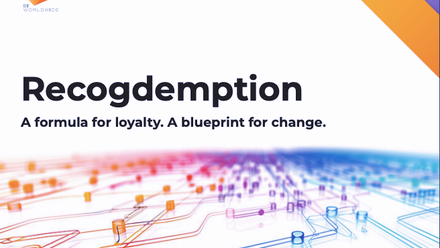How to attract talent through your wellbeing and benefits strategy

As an organisation, you need to determine where you want to position yourself in terms of your wellbeing support and benefits provision – and your long-term strategies need to reflect this.
The job market has changed significantly in the past ten years; employees are no longer looking for a “job for life”. This has had a huge impact on employers who have invested heavily on the training and development of employees, only for them to move on within five years. A high staff turnover can be unsettling for anyone working in an organisation – it can also have a knock-on effect on other employees, potentially leading to them looking for pastures new.
So how do you ramp up retention, keeping valued employees within your organisation, but also ensuring you are attracting the right talent? Here are some top tips:
Make your office a great place to work
It’s easy to look at the offices of Google and wonder how employees get any actual work done with all its wonderful potential – and more enjoyable – distractions. However, the office environment speaks volumes in terms of making an impression on employees; it needs to be conducive of a happy and productive environment.
More organisations are ensuring there are a variety of areas within the workplace that allow employees to choose the right environment for the task in hand, such as collaboration areas, private meeting rooms, break-out sections and thinking spaces – not to mention leisure areas that allow employees to de-stress. It’s important that employees are proud of their working environment.
Take control of Glassdoor
Although salary is a major influencer for any role, employees these days are looking for more than just money. Employer brand, reputation and culture are all key considerations when deciding whether or not to take a role. Just like you would look at TripAdvisor if visiting a restaurant for the first time, it’s common for employees to turn to the likes of Glassdoor to review the company too.
Glassdoor fills the gap often created by employers; capturing information, input and feedback from its prospective, existing and former employees through a range data sources such as employee engagement surveys and exit interviews. Reduce the number of people heading to Glassdoor in the first place by actively promoting your organisation as a great employer. You can also actively engage with Glassdoor by “claiming” your company page; optimise your page with your logo and company details to give prospective employees the best impression.
Use data analytics
Understanding your workforce should be approached in a similar way to understanding your customers. Workforce demographics, in-depth HR metrics and even employee surveys will help you understand the needs of your workforce. This will help to build a holistic and targeted combined strategy to cover both benefit and wellbeing. The findings should be used to review any current provisions to understand if they are valued by your workforce, and if not, where the spend could be allocated.
Give your employees choice
Apple didn’t make their music listening device to just be another Walkman; they completely reinvented the experience to make it fit and relevant for its time. Ensure that you don’t simply match your competitors’ benefit offerings; better it, or make it different. Every employee will have different priorities and by facilitating choice of benefits, it allows them to choose what is important to them.
Online benefit platforms are a good way of offering choice and are becoming very popular within organisations. However, some platforms have not evolved and prohibit employees from being able to review and choose benefits regularly at the right time for them, and instead adopt the inflexible annual “use it or lose it “approach. In order to have more choice, platform providers, (if they haven’t already) should be looking at monthly rather than annual enrolment windows and ‘anytime’ benefits, such as gym membership, should be readily available for employees to use.
Communicate
Employee feedback is key. Share the feedback among existing employees, which will show that you’ve done your research on the impact and value of your wellbeing and benefits strategy. This will also help convince people external to the organisation – such as possible talent – that your strategy is working because your own employees believe it.
Ensure that you have a clear and compelling business strategy, which includes the messages you want to promote around health and wellbeing. The strategy should align with people’s personal goals and values, which will ensure that you attract the talent you want.
Author is Laura Matthews, workplace wellbeing consultant at Barnett Waddingham.
This article was provided by Barnett Waddingham.
Supplied by REBA Associate Member, Barnett Waddingham
Barnett Waddingham is proud to be a leading independent UK professional services consultancy at the forefront of risk, pensions, investment, and insurance. We work to deliver on our promise to ensure the highest levels of trust, integrity and quality through our purpose and behaviours.







